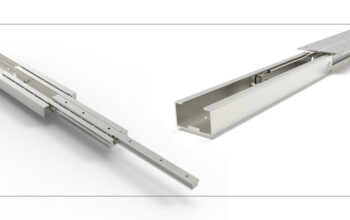When it comes to choosing the right air conditioning system for your home, the decision often boils down to two main options: a Hitachi Window AC 1.5 Ton or a Split AC. Both have their own advantages and disadvantages, making the choice between them a matter of personal preference and specific requirements.
In this comprehensive guide, we will compare these two types of air conditioners to help you make an informed decision.
The Basics of Air Conditioners
Before diving into the specifics of the Hitachi Window AC 1.5 Ton, it’s essential to understand the fundamental differences between a window AC and a split AC.
- Window AC: This type of air conditioner is a single unit with all components enclosed in one box. It is installed in a window or a wall, and its compact design makes it suitable for smaller rooms.
- Split AC: A split AC comprises two units: an indoor unit that blows cold air into the room and an outdoor unit that dispels heat outside. Split ACs are more aesthetically pleasing and are ideal for larger rooms.
Performance and Cooling Efficiency
One of the most crucial factors to consider when choosing between the Hitachi Window AC 1.5 Ton and a Split AC is the cooling efficiency.
- Window AC: This type of air conditioner is well-known for its robust cooling performance. Designed to cool a single room efficiently, it can handle the heat load of a moderately sized room. The direct airflow and powerful cooling system ensure the room cools quickly.
- Split AC: A Split AC, on the other hand, is generally more powerful and efficient than a Window AC. Because it can cool larger spaces more evenly, it is often preferred for bigger rooms or areas with multiple heat sources. The split design allows for better air distribution and quieter operation.
Energy Efficiency
Energy efficiency is another critical consideration, especially with the rising electricity costs.
- Window AC: Window ACs are generally less energy-efficient than Split ACs. However, the latest models, including the Hitachi Window AC 1.5 Ton, come with advanced features like inverter technology, which significantly improves their energy efficiency. Still, they might consume more electricity when cooling larger spaces.
- Split AC: Split ACs are known for their superior energy efficiency. They usually have a higher Energy Star rating, meaning lower electricity bills. The inverter technology in Split ACs adjusts the compressor speed according to the room temperature, leading to significant energy savings.
Installation and Space Requirements
The installation process and space requirements are essential factors, mainly if you have limited space.
- Window AC: Installing a Window AC is relatively straightforward, as it only requires window space. However, it does occupy window space and can obstruct the view or light. The unit is also bulkier, which might be better for rooms with limited space.
- Split AC: Split ACs offer more flexibility in installation. The indoor unit can be mounted on any wall, and the outdoor unit can be placed outside the building. This setup takes up less room space and does not obstruct windows. However, installation is more complex and usually requires professional assistance.
Cost and Affordability
Cost is a significant factor for most buyers, including the upfront cost and long-term maintenance expenses.
- Window AC: Window ACs, including the Hitachi Window AC 1.5 Ton, are generally more affordable than Split ACs. The upfront cost is lower, and maintenance tends to be simpler and cheaper. Additionally, if you want to purchase an AC on EMI, this option may be more budget-friendly due to the lower initial cost.
- Split AC: Split ACs usually have a higher purchase and installation price tag. However, they might offer savings in the long run due to lower energy consumption. The option to buy an AC on EMI is also available for Split ACs, which can make them more accessible despite the higher cost.
Aesthetics and Noise Levels
The look and noise levels of the air conditioner can significantly impact your comfort and satisfaction.
- Window AC: Window ACs tend to be bulkier and less aesthetically pleasing than Split ACs. Since all components are housed in a single unit, they also tend to produce more noise. If noise is a concern, this could be a drawback.
- Split AC: Split ACs are sleek and modern and can blend seamlessly with your interior decor. They are also quieter since the noisy components are housed in the outdoor unit, making them ideal for bedrooms or living areas where noise can be disruptive.
Maintenance and Durability
Finally, let’s consider the maintenance needs and durability of these AC types.
- Window AC: Window ACs are easier to maintain as all components are housed in one unit. However, they might require more frequent cleaning and servicing because they are exposed to the elements. The Hitachi Window AC 1.5 Ton is known for its durability, but like any appliance, regular maintenance is critical.
- Split AC: Split ACs are slightly more complex to maintain because of the separate indoor and outdoor units. However, the indoor unit is protected from the elements, which can reduce the frequency of cleaning. Split ACs generally have a longer lifespan, especially when regularly maintained.
Conclusion
Choosing between the Hitachi Window AC 1.5 Ton and a Split AC ultimately depends on your specific needs and circumstances. If you have a smaller room, a limited budget, and need a straightforward installation, the Hitachi Window AC 1.5 Ton is a reliable and practical choice. On the other hand, if you prioritise energy efficiency, aesthetics, and cooling performance in larger spaces, a Split AC might be the better option.Whether you opt for a Hitachi Window AC 1.5 Ton or a Split AC, considering an AC on EMI can make either choice more affordable. This allows you to enjoy a cool and comfortable home without straining your finances.




